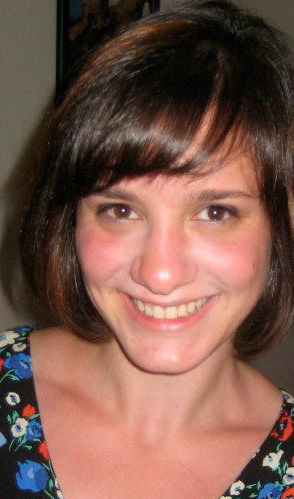 By looking at the case of Lithuanian yeshivas in Israel, Yohai Hakak’s book explores the internal tensions and dynamics of religious orders during a stage of a relative ‘loss of charisma’, in which the enthusiasm of the founding generation has diminished. It is the first study to include participant observations conducted within these institutions, which are the sacred heart of this segregated and highly religious community. A worthwhile and fascinating read for individuals with diverse academic backgrounds and interests, from gender studies, to social work, to comparative religion, writes Ilana Rothkopf.
By looking at the case of Lithuanian yeshivas in Israel, Yohai Hakak’s book explores the internal tensions and dynamics of religious orders during a stage of a relative ‘loss of charisma’, in which the enthusiasm of the founding generation has diminished. It is the first study to include participant observations conducted within these institutions, which are the sacred heart of this segregated and highly religious community. A worthwhile and fascinating read for individuals with diverse academic backgrounds and interests, from gender studies, to social work, to comparative religion, writes Ilana Rothkopf.
 Young Men in Israeli Haredi Yeshiva Education: The Scholars’ Enclave in Unrest. Yohai Hakak. Brill Academic. November 2012.
Young Men in Israeli Haredi Yeshiva Education: The Scholars’ Enclave in Unrest. Yohai Hakak. Brill Academic. November 2012.
Tradition. Conservatism. Religious fundamentalism. For some readers, these terms might connote other adjectives, such as “unchanging,” “backward,” or “unitary.” Yohai Hakak’s Young Men in Israeli Haredi Yeshiva Education indicates that discourses within Israeli Lithuanian yeshivas (orthodox religious schools) are anything but static. This study was published in Brill’s Jewish Identities in a Changing World, a series that explores the simultaneously unified and multifarious nature of Jewish identity in the 21st century. In his book, Hakak, a former journalist and senior lecturer at the University of Portsmouth’s School of Health Sciences and Social Work, examines the discursive and constructed nature of the male body in Haredi education.
With his unique access to the insular yeshiva world by way of a personal acquaintance, Hakak conducted his observations of yeshiva classes and held interviews with yeshiva students. Several of these in-depth interviews took place over multiple meetings, which allowed him to develop ties of trust with his subjects. Though the core of his fieldwork took place during a 6-month period between February and August 1998, Hakak interviewed over 60 additional Haredi young men between 1999 and 2007. Another primary component of this long-term case study was Hakak’s discourse analysis of Haredi educational guidebooks for families, parents, and educators. Additional sources included interviews with Rabbis and other yeshiva leaders, and excerpts from Haredi newspaper journalism.
In order to contextualise his exploration of the discourse on the relationship between the body and soul in the yeshiva world, Hakak gives a broad yet succinct overview of relevant literature and theoretical concepts, including modernity and modernisation theories, social movement theory, religious fundamentalism, and youth and sexuality. Particularly pertinent is Mary Douglas’ model of “enclave culture” which Hakak uses to frame his study. He addresses one of the primary criticisms of Douglas’ work: its inability to consider social change. Hakak explores social change in the yeshiva world and the primary discursive tools that Lithuanian Haredi rabbis use to respond to such change. Central to Hakak’s argument is the idea that yeshiva leaders utilise conceptions of equality and egalitarianism within the religious enclave to both mitigate defection from the community and to establish a wider gap between the enclave and the “outside” world. He also addresses tensions surrounding the gap between religious ideals and students’ reality. For example, the idea that all Haredi men should study the Torah and other core religious texts, and have the opportunity to become Torah scholars contradicts the reality that only a select few will actually become religious sages.
While the third chapter of this text describes the Haredi concept of the “ideal male body,” and young men’s place within the traditional Haredi social structure, Chapter 4 addresses the tension between calls for equality and excellence in yeshiva educational discourse. This tension, noted above, derives from the fact that yeshivas, which were competitive, elite, institutions in 19th and 20th century Europe, have, since the establishment of the state of Israel, become the normative path for all Haredi men. The Haredi population has also grown immensely since the establishment of this institutional norm. Yeshivas serve the enclave community by further isolating its members from the wider Israeli society, which is intended to preserve the enclave and prevent disassociation.
However, Hakak explains, these yeshivas, and the Haredi community more broadly, are in the process of combating a crisis of disintegration and higher yeshiva dropout rates in light of increased competition and a lack of alternative educational or vocational paths. Educational leaders, Hakak suggests, responded to these challenges by emphasising equality within the community in contrast with the outside world, and as detailed in chapter 5, by reframing the historical presentation of revered past scholars. Chapter 6, meanwhile, discusses the ways in which the students themselves deviate from, challenge, and ultimately influence the discourse on the ideal male body.
The 7th and final substantive chapter of this study discusses the context within which Haredi educators utilise western psychological and democratic concepts to protect the enclave. Hakak describes how Rabbis appropriate certain “western” discourses; “Judaizing” them so that they correspond with existing values and community norms. To this end, he suggests that certain external discourses are more likely to be integrated than others. For example, in the case of educational psychology, behavioural approaches stressing “positive reinforcement and positive role models” are more popular than psychodynamic approaches, which emphasise the role of the unconscious (p.159). This preference is logical, Hakak explains, given the centrality of “free will of choice” between good and evil in Haredi moral thought. Hakak notes however, that readers should not necessarily label these changes in the enclave discourse as “westernisation” because these shifts serve the ultimately conservative aim of preserving the existing social structure.
Hakak’s book highlights the changes that occur in insular societies in response to both internal and external circumstances. This deep yet accessible case study does not assume readers’ intimate familiarity with any of the terms or concepts he utilises, and provides additional explanations or footnotes where necessary. Furthermore, the organisational structure of the chapters is clear and each chapter is well connected to both the theoretical framework and to the other sections of the book.
Arguably the most interesting facet of his fieldwork was his access to and interviews with yeshiva students, though further studies might benefit from such in-depth interviews with adults in the community as well. Hakak’s study is a worthwhile and fascinating read for individuals with diverse academic backgrounds and interests, from gender studies, to social work, to comparative religion. He raises important questions about both the changes within this religious community and the way in which outsiders study and think about social change within such isolated sectors of society.
———————————————————-
Ilana Rothkopf completed an MSc in International Relations at the LSE in 2012, and holds an undergraduate degree in Political Science and Middle East studies from McGill University. Her research interests include foreign policy analysis, religion and international relations, political identity and the Middle East. Read more reviews by Ilana.






